Showing Spotlights 73 - 80 of 217 in category All (newest first):
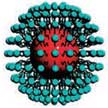 Whereas the evolutionary path of the atomic world has occurred over billions of years, the evolutionary path of the synthetic nanoparticle world has just begun. Man-made nanoparticle assemblies are beginning to revolutionize different fields including thermoelectronics, photoelectronics, catalysts, energy generation and storage, as well as medical diagnostics and therapeutics. Using the unconventional approach of comparing the atomic and nanoparticle worlds authors describe the development of nanoparticle research during the past several decades and provide pointers as to what the future might hold.
Whereas the evolutionary path of the atomic world has occurred over billions of years, the evolutionary path of the synthetic nanoparticle world has just begun. Man-made nanoparticle assemblies are beginning to revolutionize different fields including thermoelectronics, photoelectronics, catalysts, energy generation and storage, as well as medical diagnostics and therapeutics. Using the unconventional approach of comparing the atomic and nanoparticle worlds authors describe the development of nanoparticle research during the past several decades and provide pointers as to what the future might hold.
Jan 22nd, 2019
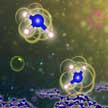 The ability to produce ammonia efficiently from air and water at room temperature and ambient pressure is of great interest in agriculture where it is used in fertilizers. In particular, the electrochemical reduction of nitrogen, in which the conversion of nitrogen to ammonia takes place under mild conditions, is highly relevant for the chemical industry that needs to cope with increasing demands for ammonia and at the same time is under pressure to reduce its ecological footprint. A new study describes novel single-atom catalysts as fascinating electrocatalysts for the application in nirtogen reduction.
The ability to produce ammonia efficiently from air and water at room temperature and ambient pressure is of great interest in agriculture where it is used in fertilizers. In particular, the electrochemical reduction of nitrogen, in which the conversion of nitrogen to ammonia takes place under mild conditions, is highly relevant for the chemical industry that needs to cope with increasing demands for ammonia and at the same time is under pressure to reduce its ecological footprint. A new study describes novel single-atom catalysts as fascinating electrocatalysts for the application in nirtogen reduction.
Nov 5th, 2018
 Though nanotechnology is portrayed as a fairly recent human invention, nature is actually full of nanoscopic architectures. They underpin the essential functions of a variety of life forms, from bacteria to berries, wasps to whales. In fact, tactful use of the principles of nanoscience can be traced to natural structures that are over 500m-years-old. Below are just five sources of inspiration that scientists could use to create the next generation of human technology.
Though nanotechnology is portrayed as a fairly recent human invention, nature is actually full of nanoscopic architectures. They underpin the essential functions of a variety of life forms, from bacteria to berries, wasps to whales. In fact, tactful use of the principles of nanoscience can be traced to natural structures that are over 500m-years-old. Below are just five sources of inspiration that scientists could use to create the next generation of human technology.
Aug 13th, 2018
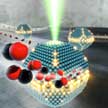 By combining advanced high-precision electron microscopy and computational methods, researchers have shed new light on the role of strain in nanoparticle catalysis. Catalytic metal nanoparticles supported on oxide substrates are used on a large scale in technological applications such as production of chemicals, abatement of air pollution and sustainable energy systems. The overall performance and durability of these systems is influenced by a range of factors, and every improvement could result in noticeable environmental and economic benefits.
By combining advanced high-precision electron microscopy and computational methods, researchers have shed new light on the role of strain in nanoparticle catalysis. Catalytic metal nanoparticles supported on oxide substrates are used on a large scale in technological applications such as production of chemicals, abatement of air pollution and sustainable energy systems. The overall performance and durability of these systems is influenced by a range of factors, and every improvement could result in noticeable environmental and economic benefits.
Jul 31st, 2018
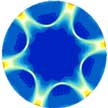 Topological superconductivity is an interesting state of matter, partly because it is associated with quasiparticle excitations, which are Majorana fermions, i.e. particles that are their own antiparticles, obeying non-Abelian statistics and therefore being of prime interest for topological quantum computing. A well-known example are chiral superconductors with px�ipy-wave pairing of electrons into a condensate of Cooper pairs, the carriers of superconductivity. Researchers suggest to consider mesoscopic samples, confined to the energetically favorable domain size, as a suitable platform to verify and potentially control the chiral domains.
Topological superconductivity is an interesting state of matter, partly because it is associated with quasiparticle excitations, which are Majorana fermions, i.e. particles that are their own antiparticles, obeying non-Abelian statistics and therefore being of prime interest for topological quantum computing. A well-known example are chiral superconductors with px�ipy-wave pairing of electrons into a condensate of Cooper pairs, the carriers of superconductivity. Researchers suggest to consider mesoscopic samples, confined to the energetically favorable domain size, as a suitable platform to verify and potentially control the chiral domains.
Dec 27th, 2017
 Neural interfaces establish direct communication between the central nervous system (CNS) and a sovereign, man-made digital system. This technology is perhaps the most important advance in the study and treatment of the brain is the development of the neural interface. Nanotechnology fabrication methods can overcome the limitations of existing interface devices by producing electrodes with an extremely high surface to volume ratio, i.e., more probe units within the same volume, resulting in unprecedented specificity.
Neural interfaces establish direct communication between the central nervous system (CNS) and a sovereign, man-made digital system. This technology is perhaps the most important advance in the study and treatment of the brain is the development of the neural interface. Nanotechnology fabrication methods can overcome the limitations of existing interface devices by producing electrodes with an extremely high surface to volume ratio, i.e., more probe units within the same volume, resulting in unprecedented specificity.
Jul 26th, 2017
 In addition to economic, social and political measures, new technologies can provide tools for poverty reduction. Many people in developing countries don't just lack money. Especially in remote regions, many also lack access to electricity, clean drinking water and basic sanitation, cooking facilities, healthcare, adequate housing, etc. The innovative solutions for developing countries supported by the use of nanotechnologies mainly target five areas: water; medicine; agriculture; food; and energy.
In addition to economic, social and political measures, new technologies can provide tools for poverty reduction. Many people in developing countries don't just lack money. Especially in remote regions, many also lack access to electricity, clean drinking water and basic sanitation, cooking facilities, healthcare, adequate housing, etc. The innovative solutions for developing countries supported by the use of nanotechnologies mainly target five areas: water; medicine; agriculture; food; and energy.
Jul 13th, 2017
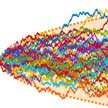 New work demonstrates that one of the most important security primitives, i.e. a true random number generator (TRNG), can be realized within the rigorous constraints required for future Internet-of-Things electronics. The solution-processability of semiconducting single-walled carbon nanotubes allows to meet these strict constraints by simultaneously enabling small-scale, low cost fabrication of low-power, ultra-thin, printable, and mechanically flexible security devices. This presents a significant milestone in enabling higher level cryptographic solutions using scalable solution processing.
New work demonstrates that one of the most important security primitives, i.e. a true random number generator (TRNG), can be realized within the rigorous constraints required for future Internet-of-Things electronics. The solution-processability of semiconducting single-walled carbon nanotubes allows to meet these strict constraints by simultaneously enabling small-scale, low cost fabrication of low-power, ultra-thin, printable, and mechanically flexible security devices. This presents a significant milestone in enabling higher level cryptographic solutions using scalable solution processing.
Jul 12th, 2017
 Whereas the evolutionary path of the atomic world has occurred over billions of years, the evolutionary path of the synthetic nanoparticle world has just begun. Man-made nanoparticle assemblies are beginning to revolutionize different fields including thermoelectronics, photoelectronics, catalysts, energy generation and storage, as well as medical diagnostics and therapeutics. Using the unconventional approach of comparing the atomic and nanoparticle worlds authors describe the development of nanoparticle research during the past several decades and provide pointers as to what the future might hold.
Whereas the evolutionary path of the atomic world has occurred over billions of years, the evolutionary path of the synthetic nanoparticle world has just begun. Man-made nanoparticle assemblies are beginning to revolutionize different fields including thermoelectronics, photoelectronics, catalysts, energy generation and storage, as well as medical diagnostics and therapeutics. Using the unconventional approach of comparing the atomic and nanoparticle worlds authors describe the development of nanoparticle research during the past several decades and provide pointers as to what the future might hold.
 Subscribe to our Nanotechnology Spotlight feed
Subscribe to our Nanotechnology Spotlight feed





